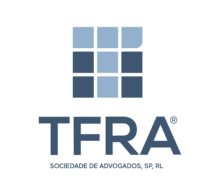Decree-Law No 6-C/2021, dated of January 15th, was published, which extended the support for progressive recovery of the companies.
Main Amendments
1. Scope
This Decree-Law establishes the extension and amendments to the measure of extraordinary support for progressive recovery of the companies in companies in business crisis, with a temporary reduction of the normal work period.
2. Situation of business crisis
For the purposes of this law, it is considered a situation of business crisis when there is a reduction of invoicing of 25% or more in the full calendar month immediately preceding the calendar month to which the initial application for support or extension refers, compared to the same month of the previous year or the year 2019, or compared to the monthly average of the six months preceding that period.
For those who have been in business for less than 24 months, the reduction in invoicing referred to in the preceding paragraph shall be determined by comparing to the average monthly turnover between the start of the business and the penultimate complete month preceding the calendar month to which the initial application for support or extension refers.
3. Support for progressive recovery of the companies with a temporary reduction of normal work period
The employer who is in a situation of business crisis, according to point 2 above, can access the extraordinary support for the progressive recovery of the companies with a temporary reduction of the normal work period of all or some of its workers.
The provisions of the previous paragraph shall apply to members of statutory bodies performing management functions, with declarations of remuneration, registration of social security contributions and with employees.
The limits for the reduction of the normal work period of the statutory bodies referred to in the previous paragraph shall be the following, up to the limit of the normal work period reduction applicable to their employees:
- a) In the case of an employer with a reduction in invoicing of 25% or more, the reduction of the normal work period per employee may be a maximum of 33%.
- b) in the case of an employer with a reduction in invoicing of 40% or more, the reduction of the normal work period per employee may be a maximum of 40%.
- c) in the case of an employer with a reduction of invoicing of 60% or more, the reduction in the normal work period per employee may be a maximum of 60%.
Regardless of the date of submission of the application for the support, the employer may only benefit from this support until 30 June 2021.
4. Maximum limits for the reduction of the normal working period per employee
The temporary reduction of PNT per employee has the following limits:
- a) In the case of an employer with a reduction in invoicing of 25% or more, the reduction of the normal work period per employee may be a maximum of 33%.
- b) in the case of an employer with a reduction in invoicing of 40% or more, the reduction of the normal work period per employee may be a maximum of 40%.
- c) in the case of an employer with a reduction of invoicing of 60% or more, the reduction in the normal work period per employee may be a maximum of 60%.
- d) in the case of an employer with a reduction of invoicing of 75% or more, the reduction of the normal work period per employee may be a maximum:
- i. Up to 100% in January, February, March, and April 2021; and
- ii. 75% in May and June 2021.
For the purposes of paragraph (d) (ii) above, the Government shall assess in April 2021 the evolution of the pandemic situation and economic activity for the first quarter, adjusting the limits for the temporary reduction of the normal work period in the light of its findings.
5. Retribution and compensation
During support, the employee is entitled to receive from the employer the remuneration corresponding to the hours worked.
During the period of the support, the employee is also entitled to a monthly wage compensation corresponding to the hours not worked, paid by the employer, in the amount of four fifths of his gross normal wage corresponding to the hours not worked.
If from the payment of the hours worked and the hours not worked it results in a monthly amount lower than the employee’s gross normal remuneration, the amount of the social security compensation is increased to the extent strictly necessary to ensure that the compensation is paid, up to a maximum limit of the gross normal remuneration of EUR. 1995,00 (one thousand nine hundred and ninety-five euros).
6. Partial exemption of social security contributions
Employers who are micro, small, or medium-sized enterprises and who benefit from the support are exempt from 50 % of the payment of the employer’s contributions regarding the employees covered by the measure, calculated based on the amount of the compensation.
The 50% remission of contributions shall apply by reference to the employees affected and the months during which the employer is the beneficiary of the support.
The 50 % remission of contributions shall be recognised ex officio.
7. Training Plan
For each month of extraordinary support for progressive recovery of companies with a temporary reduction of the normal work period, the employer acquires the right to a training plan.
The training plan provided for in the previous paragraph confers the right to a scholarship in the maximum amount of 70% of the social assistance index (IAS – currently corresponding to EUR 438,81) per employee covered by the measure, being the employer entitled to 30% of the IAS and the employee entitled to an amount equivalent to 40% of the IAS in situations where the amount received by the employee’s is lower than his normal gross salary and must be:
- a) implemented in conjunction with the employer, being the IEFP, I.P. responsible for approving it, and it may be developed remotely, when possible and the conditions allow it.
- b) Contribute to the improvement of workers’ professional skills, whenever possible by increasing their level of qualification, and contribute to increasing the competitiveness of the company.
- c) Correspond to the training modalities foreseen within the National System of Qualifications.
- d) To be implemented outside effective working hours, if within the normal period of work.
- e) To start in the period in which the employer benefits from the extraordinary support for the progressive recovery of companies with a temporary reduction of the normal period of work.
- f) To ensure the attendance of at least 50 hours of training per worker within a period of 30 days.
The scholarship referred to in the previous paragraph is supported by the IEFP, I.P., and is paid directly to the employer, when applicable, who assumes the responsibility of delivering to the worker the amount due, according to the number of training hours attended.
The employer may choose to apply for each training plan or an integrated application for training plans, submitting through the IEFP, I.P. website the following elements:
- a) A sworn statement that it has submitted the respective application to social security; or
- b) Proof of granting of social security support.ocial;
- c) Nominative list of workers to be covered.
The training may start after the decision of approval by the EPI, I.P., based on the elements referred to in the previous paragraph, and without prejudice to the provisions of the following paragraph regarding payment.
In the cases referred to in item a) above, the payment of 85 % of the approved amount in application occurs after the employer presents the proof of acceptance of the support by the social security.
In the cases referred to in item b) above, the start of the training shall give rise to the payment of 85 % of the amount approved in the application.
With the conclusion of the training plans, the amount to which the employer is entitled shall be determined, and the payment of the remainder, if there is any, up to a limit of 15% of the value approved in the application.
8. Employees‘ duties
During the period of reduction of the normal work period to 100 %, the duties of the worker that do not imply the effective provision of work are maintained, namely the duty to attend professional training courses indicated by the employer and the duty to comply with other orders and instructions arising from the power of management that do not involve the provision of work.
9. Effects of the reduction of the normal work period during the holidays, holiday allowance, or Christmas allowance
For 2020, the worker is entitled to a full Christmas allowance, with the social security contribution corresponding to one twelfth of half of the compensation for the number of months of support granted during 2020, and the remainder by the employer, if the date of payment of that allowance coincided with the period of application of the extraordinary support for the progressive recovery of the companies.
10. Cumulation and sequentially of the support
The following measures cannot be cumulated:
- i. extraordinary support for the progressive recovery of the companies;
- ii. simplified lay-off; and/or
- iii. the simplified support for micro-enterprises to maintain jobs. The IEFP, I.P., and the competent social security service (ISS, I.P) may verify the possible undue accumulation of support, simultaneously or sequentially, through the official exchange of information.
The verification of non-compliance with the rules of the support determines the immediate termination of the support and the restitution and payment, to the IEFP, I.P., and to the ISS, I.P., respectively, of the total amount already received and exempted within the scope of the respective support.
11. Supervision
The supervision of compliance with the law is the responsibility of the Authority for Working Conditions, the competent social security service and the IEFP, I. P..
Please note that the information contained herein is of generic nature and, therefore, does not exempt the analysis of the specific case, nor the consulting of the official documentation and legislation in force at each moment.

